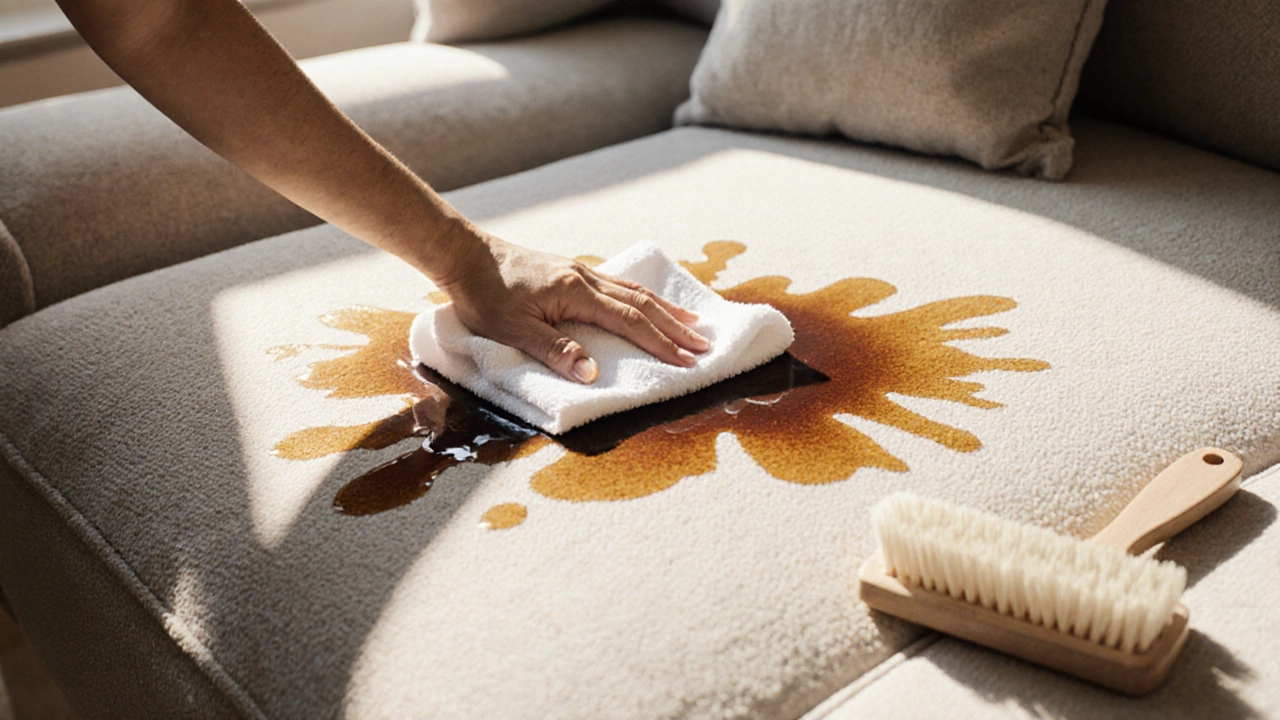Cleaning Upholstery
When working with cleaning upholstery, the process of removing dirt, stains, and odors from fabric‑covered furniture using safe, effective methods. Also known as upholstery cleaning, it helps extend the life of sofas, chairs, and car seats. A key part of a healthy home, cleaning upholstery isn’t just about looks – it reduces allergens and improves indoor air quality. Alongside the core practice, upholstery steam cleaning, uses low‑temperature steam to dissolve grime without harsh chemicals offers a deep‑clean alternative for delicate fabrics, while DIY upholstery cleaner, mixes common household ingredients like baking soda and vinegar for a budget‑friendly solution lets anyone tackle spills at home. Finally, eco‑friendly cleaning, focuses on biodegradable products and reduced water usage ensures the process is kind to the planet.
Why Proper Upholstery Cleaning Matters
Cleaning upholstery encompasses more than just visual appeal; it directly impacts health and durability. Fabrics trap dust mites, pet dander, and food particles, creating a breeding ground for allergens. Regular vacuuming removes surface debris, but deep cleaning reaches the fibers where microbes hide. Steam cleaning penetrates deeper than a vacuum, breaking down oily residues without chemicals, making it ideal for households with kids or pets. When choosing a method, consider the fabric type: cotton and linen handle moisture well, while silk and leather need gentler, dry‑clean approaches. Knowing these attributes helps you select the right tool – a handheld steam wand, a rotating brush, or a simple spray‑and‑wipe recipe – and avoid damage.
DIY upholstery cleaners rely on simple, available ingredients. Baking soda neutralizes odors, while white vinegar cuts grease and loosens stains. Mix one part vinegar with two parts water, add a teaspoon of dish soap, and you have a versatile cleaner for most fabrics. Test any solution in an inconspicuous spot first; this prevents color bleeding. For stubborn stains, applying a paste of baking soda and water, letting it sit for 15 minutes, then gently brushing can lift residues before rinsing with the vinegar mix. These home‑made options align with eco‑friendly cleaning principles, reducing reliance on commercial chemicals that may linger in your living space.
Stain removal is a sub‑topic that deserves its own focus. Fresh spills – coffee, wine, or pet accidents – should be blotted, not rubbed, to avoid spreading. For older, set‑in stains, a two‑step approach works well: first, use a mild detergent solution to loosen the grime; second, follow with a steam treatment to lift remaining particles. Certain stains, like oil or ink, need specialized agents such as enzyme cleaners or isopropyl alcohol. Understanding the nature of the stain informs the choice of cleaning agent, ensuring efficient removal without harming the upholstery.
Maintenance after cleaning is just as crucial as the cleaning itself. Allow furniture to dry completely – ideally overnight – to prevent mildew. Rotate cushions regularly and use protective covers to shield high‑traffic areas. Schedule deep cleaning every six to twelve months, depending on usage, to keep fabrics fresh and extend their lifespan. By integrating these practices, you create a routine that balances effectiveness, safety, and environmental responsibility.
Below you’ll find a curated collection of articles that dive deeper into each of these topics. From step‑by‑step guides on steam cleaning a couch to natural recipes for DIY upholstery cleaners, the posts cover practical tips, common pitfalls, and expert advice. Explore the range to find exactly what you need for spotless, long‑lasting furniture.

Best Ways to Clean Couch Upholstery and Keep It Fresh
Learn the most effective, step‑by‑step method to clean couch upholstery, choose the right cleaners, avoid common mistakes, and keep your sofa looking fresh.
Read More